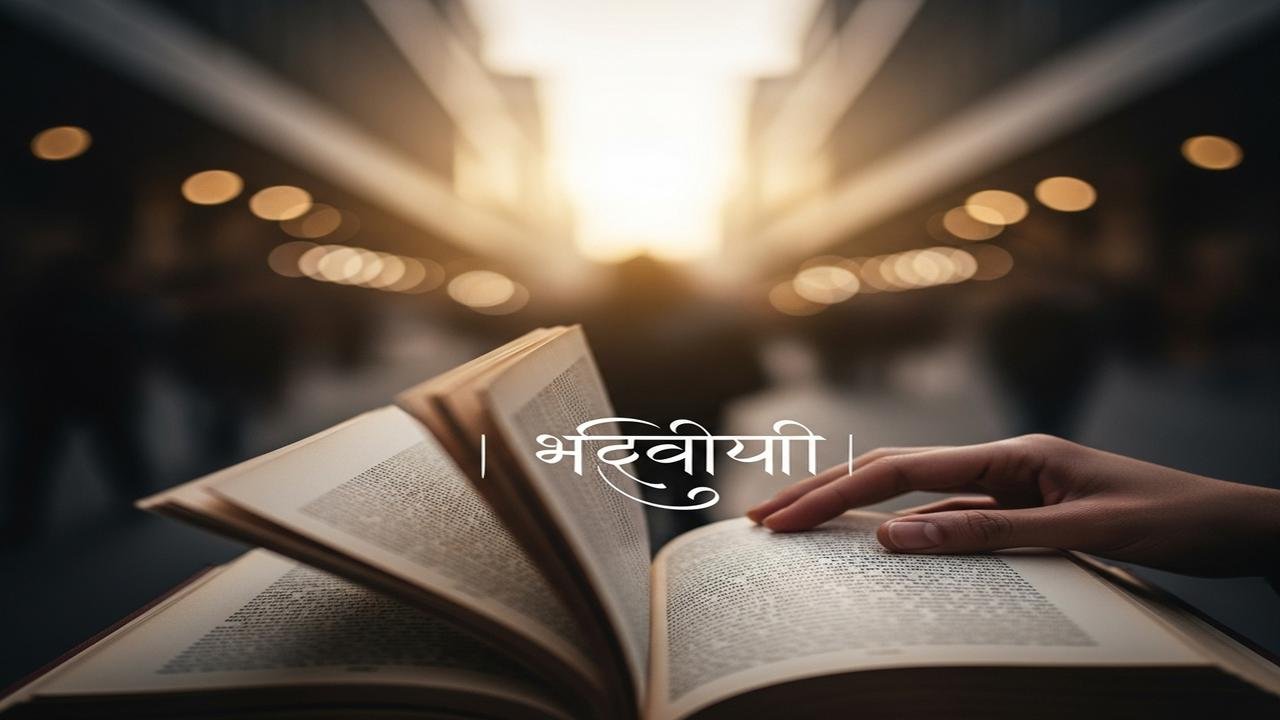Bhagavad Gita: How Verse 2.47 Guides Modern Duty

The battlefield as everyday life
The opening scene of the Gītā — Arjuna on the chariot, refusing to fight — is often read as a literal moment in the Mahābhārata. Symbolically it works even more powerfully: the battlefield represents the ordinary struggles of life, and Arjuna’s paralysis is any ethical confusion or emotional overwhelm that prevents action. Gītā commentators note this double register: the text is both historical narrative and persisting moral drama. In modern life the battlefield can be an office, a hospital ward, a courtroom, a home, or a public square.
Krishna the charioteer: inner guidance and ethical counsel
Krishna as charioteer symbolises guidance of intellect and will. For many readers across Vaiṣṇava and Smārta traditions, Krishna is a personal God who gives direct counsel. For others — as in some Advaitic readings — Krishna represents the higher Self or impersonal wisdom. Both readings point to the practical insight: decision-making should be guided by steady discernment rather than reactive emotion. Gītā teachers define this discernment through practices that sharpen attention and clarify values.
Key symbolic teachings and their modern translations
- Dharma — ethical duty: The Gītā’s repeated appeal to dharma (one’s duty) invites readers to weigh role-based responsibilities (for example, a doctor’s duty of care) against universal moral constraints. Contemporary debates — whistleblowing, public service, workplace ethics — can be read through this balancing act.
- Nishkama karma — selfless action: Verse 2.47 (“You have the right to work only, never to the fruit of work”) is often cited to discourage attachment to results. In modern terms it encourages commitment to process and skill rather than anxious performance-chasing.
- Svadharma — own path: The Gītā suggests that authenticity and responsibility often lie in fulfilling one’s own role rather than imitating another’s life. That principle can be applied to career choices, family roles, and civic participation.
- Sthitaprajña — steady wisdom: The description of the steady-minded person (2:56–72) points to emotional equanimity — not indifference, but resilient clarity amid gain and loss. Contemporary leadership literature and stress management both echo these traits.
- Bhakti and jñāna — devotion and knowledge: The Gītā offers multiple paths: devotion (bhakti), knowledge (jñāna), and action (karma). Modern spiritual seekers often combine elements — ethical reflection, intellectual study, and compassionate service — mirroring the Gītā’s pluralism.
- Vishvarupa — cosmic perspective: The vision of the universal form (chapter 11) invites a shift from narrow self-concern to a wider sense of belonging. Environmental ethicists and social reformers draw on this move from separation to interconnection.
Practical ways people bring the Gītā’s symbolism into daily life
- Use a moment of pause before responding to conflict — treat it as switching the chariot reins to steady reasoning rather than the reins being pulled by anger.
- Frame work as contribution rather than only a means to reward — adopt the Gītā’s emphasis on duty without clinging to outcomes.
- Develop a “daily inquiry” practice: 5–10 minutes of quiet reflection about values and actions, modeled on the Gītā’s emphasis on self-knowledge.
- When facing large public decisions, look for the balance between role-based duty and universal principles — what protects dignity and reduces harm?
- Use ritual or devotional practices (puja, nama japa) to cultivate steadiness; they function psychologically for many as stabilising routines.
Institutions, politics and civic duty
The Gītā has long been read by leaders — politicians, activists, and social reformers — as a manual of ethical action. Mahatma Gandhi cited the Gītā’s emphasis on non‑attachment to results when discussing satyagraha, while others have taken the text’s call to dutiful action into service of public administration. The lesson for contemporary civic life is not doctrinal: it is methodological — clarify public roles, train institutions to support impartial action, and resist personalising policy choices that ought to be procedural and accountable.
Interpretive diversity and respectful reading
There is no single “correct” reading. In Śaiva traditions interpretations highlight the nature of devotion and austere practice; in Vaiṣṇava readings Krishna’s personal divinity is central; Advaitic readings emphasize non-dual knowledge. Modern commentators, from classical Acharyas (such as Śaṅkarācārya, Rāmānuja, Madhva) to 20th‑century thinkers, reading the Gītā through their philosophical lenses, arrive at different emphases. A humble, respectful engagement accepts this pluralism and reads the text both in its historical context and as an open conversation across centuries.
Limitations and caution
The Gītā is not a policy manual or a clinical guide. Its metaphors are interpretive tools rather than literal prescriptions. Practices like long fasts, breathwork, or intensive austerities associated with certain readings can affect health; consult a qualified practitioner or physician before starting them.
Quick reference: chapters worth revisiting
- Chapter 2 — Sankhya and Karma Yoga: key ideas on action without attachment (including verse 2.47).
- Chapter 3 — Karma Yoga: practical rules on duty and society.
- Chapter 11 — Vishvarupa Darśana: the vision of the cosmic form and perspective-shift.
- Chapter 12 — Bhakti Yoga: traits of devotion and its social effects.
- Chapter 18 — Moksha through renunciation: summary of paths and final teaching.
Closing note
The Gītā’s power lies in symbolic density: a battlefield that is also a classroom, a charioteer who is both friend and inner guide, a call to duty that insists on compassion. For contemporary Indians negotiating work, family, faith and public life, these images remain practical precisely because they are adaptable. Read with humility and an eye for context, the Gītā offers a vocabulary for courage, discernment and steady action — not a single answer, but a conversation starter for a life of responsible engagement.
